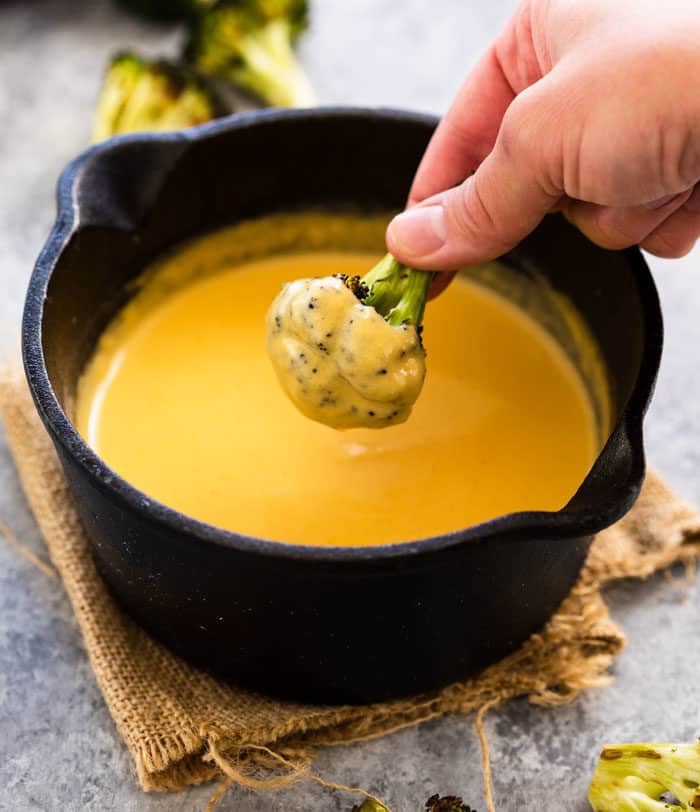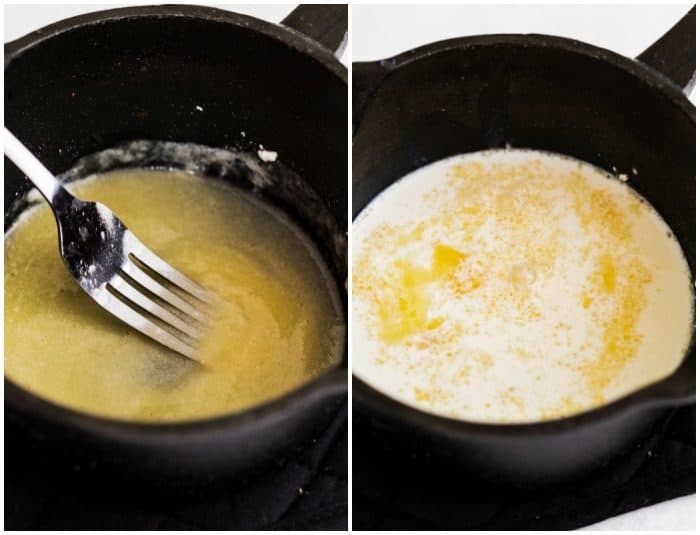Baked Potato Day. I would look forward to it every single Wednesday in middle school, when you’d get a big ol’ baked potato for lunch and a helping of the cafeteria’s cheese sauce. No one liked baked potato day like I did. In fact, I’m probably the only one who even liked it at all. 🤣 Alright, there are in fact a few things you need to know to make sure that you have super creamy consistency, otherwise you could easily end up with a grainy texture. Read on!
How to Melt Cheese for the Creamiest Consistency
-Melted cheese will have the best, most creamy consistency if it’s at room temperature prior to being melted. -Avoid using cheese that’s pre-shredded. The cheese melts best if it’s purchased as a block and shredded or sliced at home. –Avoid aged cheeses. Stay away from hard cheeses like Parmesan. Those won’t melt nearly as well. -Add the cheese to a warm base gradually. If the liquid is too hot, the fat from the cheese will separate too quickly and the consistency will be grainy or clumpy.
What to Serve with Cheese Sauce
Aside from pairing cheese sauce with roasted broccoli, cauliflower, and baked potatoes, you can also drizzle it over homemade french fries or burgers! It also makes a great dip for pretzels, bread sticks, chicken tenders, tortilla chips, and more!
Storing Leftover Cheese Sauce
This sauce is best if refrigerated and used within 3-5 days.
Reheating
Reheat in a skillet over medium-low heat. Add splashes of milk to loosen it up and restore it back to it’s original form.
Can You Freeze Cheese Sauce?
I love to freeze anything and everything, however creamy, dairy-based sauces such as this one don’t usually freeze well, the consistency just isn’t the same when reheated.
Try These Next










